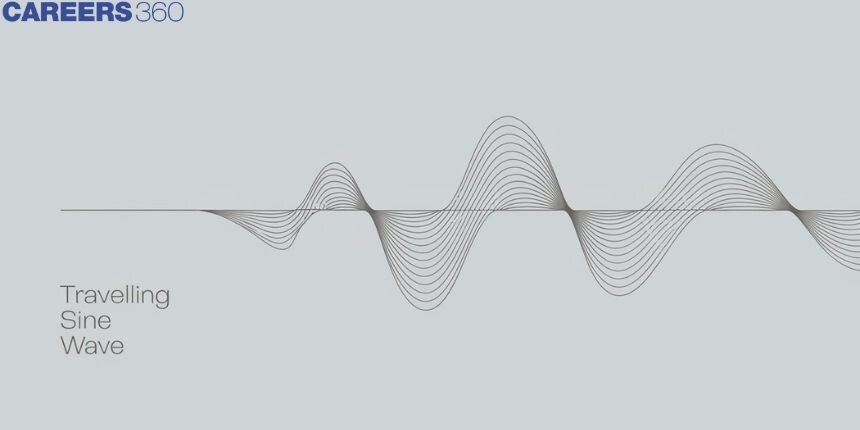Travelling Sine Wave
A travelling sine wave is a fundamental concept in physics and engineering, representing a wave that moves through a medium, such as sound waves travelling through air or water waves moving across the surface of a pond. Imagine the rhythmic motion of waves at the beach; each crest and trough you see is a manifestation of a travelling wave. Just like how these ocean waves carry energy and information across distances, travelling sine waves are used in various technologies, from transmitting signals in communication systems to the vibrations in musical instruments. The smooth, periodic oscillation of a sine wave mirrors many natural phenomena, making it a powerful tool for modelling and understanding the world around us. In this article, we will cover the concept of Travelling Sine Wave This concept falls under the broader category of Oscillations and Waves.
This Story also Contains
- Travelling Sine Wave
- General Form
- Solved Example Based on Travelling Sine Wave
- Summary

Travelling Sine Wave
A travelling sine wave is a type of wave that moves or propagates through a medium, carrying energy from one point to another without the physical transport of matter. This wave can be visualized as a continuous, smooth oscillation that repeats in space and time, resembling the classic sine curve. The sine wave or sinusoid is a mathematical function that describes a smooth repetitive oscillation.
Here
and
General Form
A spatial variable x represents the position on the dimension on which the wave propagates, and a characteristic parameter k called wave number represents the proportionality between the angular frequency ω and the linear speed (speed of propagation ).
which is
The wavenumber is related to the angular frequency by:
Also,
Solved Example Based on Travelling Sine Wave
Example 1: At t = 0, a transverse wave pulse travelling in +ve -direction, with the speed of 2 m/s by the function
1) 3 m/s
2) -3 m/s
3) 8 m/s
4) -8 m/s
Solution:
Relation between phase velocity and wave speed

wherein
Hence, the answer is the option (2).
Example 2: Equation of travelling wave on a stretched string of linear density 5g/m is
1) 12.5
2) 7.5
3) 10
4) 5
Solution:
Relation between particle velocity and wave speed

wherein
Hence, the answer is the option (1).
Example 3: A transverse wave is represented by
1) 40 cm
2) 20 cm
3) 10 cm
4) 60 cm
Solution:
Relation between phase velocity and wave speed

wherein
Hence, the answer is the option (1).
Example 4: A travelling harmonic wave is represented by the equation y(x,t) = 10-3 sin(50t + 2x), where x and y are in meters and t is in seconds. Which of the following is a correct statement about the wave?
1) The wave is propagating along the negative x-axis with a speed of 100 ms-1.
2) The wave is propagating along the positive x-axis with a speed of 25 ms-1.
3) The wave is propagating along the positive x-axis with a speed of 100 ms-1.
4) The wave propagates along the negative x-axis with a speed of 25 ms-1
Solution:
Speed of sinusoidal wave
Wave Speed
wherein
General eq
So, the wave is moving along the
Hence, the answer is the option (2).
Example 5: For a transverse wave travelling along a straight line, the distance between two peaks (crests) is 5m, while the distance between one crest and one trough is 1.5m. The possible wavelengths (in m) of the waves are:
1)
2)
3)
4)
Solution:
Given trough to crest distance
So
and crest-to-crest distance distance
So
S0
from these two pieces of information, we get
And since
So
Hence, the answer is the option (2).
Summary
A travelling sine wave is a wave that propagates through a medium, transferring energy without the physical movement of matter. The wave's behaviour can be described mathematically by its amplitude, frequency, wavelength, and wave speed. Understanding these properties allows us to solve problems related to wave motion, such as determining particle velocities, wave tension, and propagation direction, as illustrated in the examples provided.